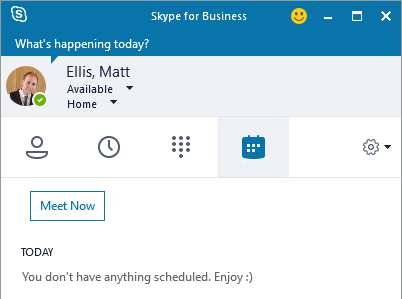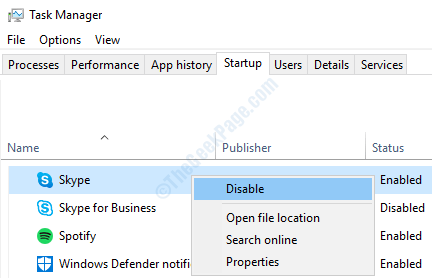
- #SKYPE FOR BUSINESS STARTUP OPTIONS WINDOWS 10 HOW TO#
- #SKYPE FOR BUSINESS STARTUP OPTIONS WINDOWS 10 FULL#
- #SKYPE FOR BUSINESS STARTUP OPTIONS WINDOWS 10 WINDOWS 10#
- #SKYPE FOR BUSINESS STARTUP OPTIONS WINDOWS 10 WINDOWS#
#SKYPE FOR BUSINESS STARTUP OPTIONS WINDOWS 10 HOW TO#
How to add or remove startup apps for all users
#SKYPE FOR BUSINESS STARTUP OPTIONS WINDOWS 10 FULL#
To add a new startup item, you need to create a new string value with any desired name and set its value data to the full path of the application which you want to load at startup: To delete an item, right click it and choose Delete from the context menu: There you will find startup items for current users which are stored in the Registry:.Go to the following key: HKEY_CURRENT_USER\Software\Microsoft\Windows\CurrentVersion\Run.To add or remove startup apps for the current user from the Registry, you need to follow the instructions below: To remove the application from the Startup folder, delete the appropriate shortcut.
#SKYPE FOR BUSINESS STARTUP OPTIONS WINDOWS 10 WINDOWS#
Just copy and paste a shortcut in this folder so that the app loads when Windows boots. The Startup folder is located here: C:\Users\Your user name\AppData\Roaming\Microsoft\Windows\Start Menu\Programs\Startup The text above is a special shell command which will open the Startup folder for you directly.
#SKYPE FOR BUSINESS STARTUP OPTIONS WINDOWS 10 WINDOWS 10#
Tip: You open the Startup tab of Task Manager directly in Windows 10 by running the following command: taskmgr /0 /startup All you need to do is to open the Task Manager app and go to the Startup tab: This can be done via Task Manager in Windows 10. To manage startup apps, you need to review all of them so you can turn off the ones you don't want.

Runs Setup to remove Skype for Business from the user's computer.Add an app installed from the Windows Store to Startup How to manage startup apps Runs Setup from the user's computer to repair Skype for Business.

For example, you can use the /modify option to add or remove Skype for Business features. Used with a modified Config.xml file to run Setup in maintenance mode and make changes to an existing Office installation. Use the /config option to specify the Config.xml file you customized for Skype for Business installations, for example: /config \\server\share\Skype15\Skype.WW\Config.xml

Specifies the Config.xml file that Setup uses during the installation. You can specify a path of a specific customization file (.msp file) or to the folder where you store customization files. Runs the Office Customization Tool to create a Setup customization file (.msp file).Īpplies the specified Setup customization file to the installation. Office Setup Command-Line Options Setup Command-Line Option The Office Setup.exe command line recognizes the command-line options described in the following table. Instead of using the Setup command-line options, you'll typically use the Office Customization Tool and the Config.xml file for product setup and feature customization. The Setup.exe command line is used for very few operations in Office setup. Summary: Learn about Setup.exe command line operations in Office setup.


 0 kommentar(er)
0 kommentar(er)
